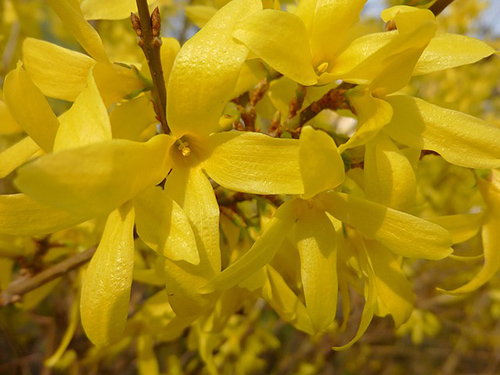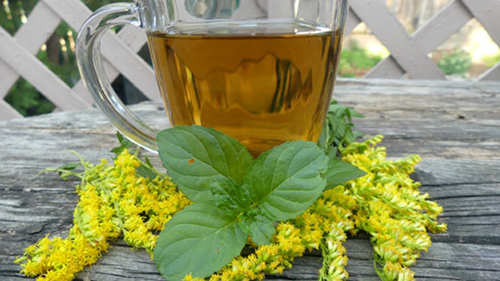Contents
The first to describe the many medicinal properties of the goldenrod plant was Arnau DE Vilanova (Valencia, Spain, 1240- Genova, Italy, 1311), a great Middle Age physician among whose patients were kings and popes and one of the most credited professors of the ancient Medicine College of the University of Montpellier. He said the plant was “admirable in producing urine and breaking up kidney stones.”
Seven centuries after him, goldenrod is still used with the same aims today, and its properties have been scientifically proven.

Goldenrod Plant Scientific Facts
- Other names: European goldenrod.
- Scientific name: Solidago virga-aurea L.
- French: Solidago.
- Spanish: Vara de Oro.
- Environment: It grows in forests and woods on non-calcareous soils all over Europe and has been naturalized to America.
- Description: Vivacious plant of the Compositae family, with upright stems growing up to one meter high. It has yellow flowers which gather in terminal chapters.
- Parts of the plant used medicinally: The flowering tops.
Healing Properties and Uses

The goldenrod plant contains tannin with astringent properties, saponins and coumarins with diuretic properties, and flavonoids with a diuretic effect. Its applications are the following:

- Renal afflictions. Goldenrod is a good diuretic plant that increases urine production and promotes the kidneys’ excellent functioning. It is recommended for edema (retention of fluid in tissues), nephritis (inflammation of kidneys), nephrosis (albuminuria, loss of albumin through urine), and kidney stones (it promotes their termination).
- Cystitis and prostate conditions. This plant provides an anti-inflammatory action on the urinary organs and combats urinary discomforts.
- Depurative treatments. They promote the elimination of metabolic waste substances such as uric acid. They are recommended for arthritis, gout, eczema, and, as a rule, whenever the blood should be cleansed of toxic substances.
- Obesity. Due to its diuretic and depurative properties, goldenrod is a good complement in treating obesity.
- Diarrhea and colitis. Because of its astringent properties, in many places in Spain, this plant is used to stop children’s diarrhea, especially in Summer and those that seem to be caused by teething.
- Astringent and vulnerary. It is employed to heal wounds and torpid ulcers (sores) in external applications, whether as compresses, lotions, or poultices.
How to use Goldenrod
- Decoction with 30-40 grams of flower clusters per liter of water, boiling for 5-10 minutes. Drink up to five cups daily.
- Syrup. To treat children’s diarrhea, we recommend increasing the decoction time until the liquid reduces by half, then adding brown sugar or honey to prepare a syrup, which will take a spoonful.
- Compresses are soaked in a more concentrated decoction (50-100 grams per liter) than those used internally.
- Lotions with concentrated decoction.
- Poultices with the plant, mashed directly on the skin for 15 minutes, two or three times a day.
DISCLAIMER: All content on this website is presented solely for educational and informational objectives. Do not rely on the information provided as a replacement for advice, diagnosis, or treatment from a qualified medical expert. If you are pregnant, nursing, or have any preexisting medical concerns, talk to your doctor before using any herbal or natural medicines.
REFERENCES
- George D. Pamplona-Roger, M.D. “Encyclopedia of Medicinal Plants.” George D. Pamplona-Roger, M.D. Encyclopedia of Medicinal Plants. Ed. Francesc X. Gelabert. vols. 2 San Fernando de Henares: Editorial Safeliz, 2000. 594, 595. Print.[Goldenrod plant]
- Cleveland Clinic https://my.clevelandclinic.org/
- National Center for Complementary and Integrative Health (NCCIH) https://www.nccih.nih.gov/
